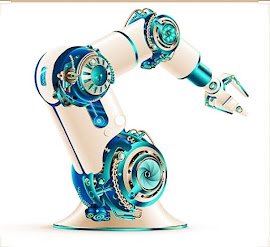Classification as per robot application:
1. Industrial: Industrial robots are generally fixed manipulators which perform in various working environments. They perform various general-purpose tasks like Welding, Painting, machining, etc. In fact, the first robots were the industrial robots which were used for simple repetitive tasks.
2. Non-Industrial or Special Purpose: These are robots which assist humans in their chores,
3. Medical: They has been an washing use of robots in the medical field for surgery, statute and training, Medical robots are not meant to replace the surgeons but serve as a surcease assistant to the surgeon.
4. Space: With the advent of robotic technologies, exploration of various celestial bodies ha s been a reality, Task like space manipulation, surface mobility and scientific experiments performed by space robots
5. Defense : These include bomb disposal robots, transportation robots and reconnaissance drones Equipped with infrared sensors, these robots react more rapidly than humans in emergeney and hazardous situations.
6. Security: These robots are used for surveillance and guarding large civilian facilities such as Power generating plants, oil refineries, etc which are under threat from terrorists. An example is DRDO's NETRA (An Unmanned Aerial Vehicle).
7. Domestic: These robots are used to perform daily tasks at home, such as robotic vacuum cleaner, cleaning robots. 8. Entertainment: These robots are used in various entertainment places like amusement parks, joy rides, sports, etc. Examples include KUKA Broadcaster (amusement ride robot), Honda's Asimo, Sony's Aibo, etc.
Classification by Degrees of Freedom: Degrees of freedom refers to the different directions a robotic arm can move. They represent the location as well as the orientation of an object. Basically, such type of robots is pick and place robots, which pick and place the objects on a location and with an orientation.
1. Degrees of Freedom: A robot with 3 degrees of freedom can only pick up the object and place it anywhere in its workspace, using the 3 different coordinate axes.
2. Degrees of Freedom: A robot with 6 degrees of freedom can pick the object and place it anywhere in its workspace, at any orientation.
3. Other Degrees of Freedom: A robot with degrees of freedom other than 3 or 6 has restricted movement in either linear or angular direction. In other words, it may orientate the object in any desired direction, but can place the object in only limited directions. However, a robot with higher degrees of freedom- say 7, can have infinite possible ways to place as well as orientate the object. Classification by Kinematic Structure: The word Kinematic' refers to a study of the motion of points, bodies and system of bodies, without taking into effect the mass of each of the bodies. Before going deep into the study of robotics, key us first understand the simple analogy, consider your arm.The upper or shoulder joint allows your arm to move in the angular direction and hence is a revolte joint. The middle or elbow joint allows arm movement in different angular directions and hence is a revolte joint. The lower or palm joint is also a revolte joint and thus allows rotary motion.
Similarly, Robots can be elusified based on their coordinate systems, Le. based on reachable coordinates of a point on the end- effectar.
1. Cartesian: When arms of a robot move in the XYZ rectangular coordinate system, it is known as a Cartesian robot. It needs a large volume to operate and has a rigid structure. A set of rotary motors coupled with nut and ball screw make it possible to achieve the rectilinear motion, However, owing to frequent maintenance of these screws, the robots tend to more expensive.
2. Cylindrical: When arms of a robot move in one angular and two linear directions, it is known ra Cylindrical robot. It has basic rotation, elevation and reach. Unlike Cartesian robots, these robots ire less volume. These are used in applications where the requirement is to reach into small openings arworking on cylindrical surfaces like welding pipes.• Classification by Movement:
- Bipedal: A robot having 2 legs is a Bipedal robot. A classical example is a Humanoid robot. These robots work in the environment like that of humans and are designed to imitate human behavior.











0 Comments